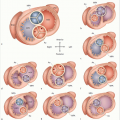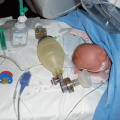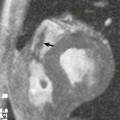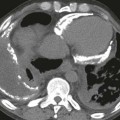This chapter is intended only to provide a brief overview of common standard values tables. The fundamental issue of standard values—which are subject to numerous factors dependent upon patients, devices, or examiners—is something that any user should always keep in mind. In general, standard values for children and adolescents are rarer than for adults. In some cases, such as for new MRI methods including T1 and T2 mapping and determining extracellular volume fraction, no values exist for pediatric patients. Refer to the literature for information regarding adult patients.
1Regardless of the selected method and the applied algorithm, absolute values should not be applied. Rather, indicated standards (which are generally based on body surface area) should be used. Furthermore, the same methods and protocols should be used for follow-up examinations. The DuBois formula for calculating body surface area has been tried and tested in pediatric patients.
2,
3 Furthermore, it should be noted that the trabecula and papillary muscles are considered part of muscle mass for volumetric data, yet are excluded from the volume calculations.
1 In addition to the guidelines for quality assurance and standard values published by societies such as the DGPK,
4,
5 web-based, continually updated large databases (such as the
Z-Scores of Cardiac Structures, Detroit,
6,
7 which uses data from 782 patients from the Children’s Hospital of Michigan) will be available for use in standard values tables. Body size and weight are entered on an input screen in order to calculate standard values using the Z-Scores of Cardiac Structures website. The user can then select which of the five various calculation algorithms (Boyd, DuBois, Gehan & George, Haycock, or Mosteller) should be used to determine body surface area (BSA), or whether it should be calculated using only body weight. The measured values can then be entered for various parameters, which the website subsequently uses to calculate
Z-scores. Certain authors prefer using the Mosteller formula to calculate body surface area in pediatric patients.
2,
3 Large registries, such as the Competence Network for Congenital Heart Defects, are another source of standard values.
8,
9,
10,
11 This chapter will make reference to both sources.










